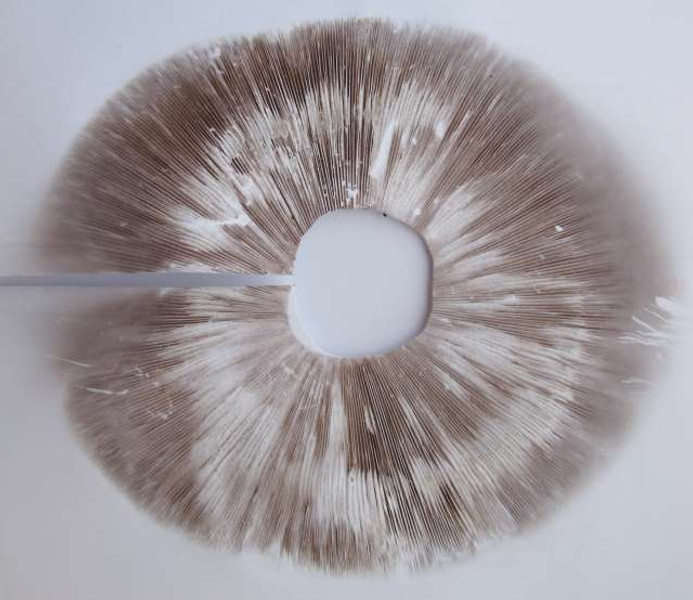How to Make a Mushroom Spore Print: Comprehensive Guide
Posted by Troy Cosky, Founder FunGuy Grow Supply on 31st May 2023
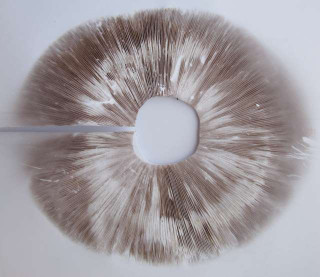
Introduction: Journey into the World of Mushroom Identification
Are you a mushroom enthusiast looking to unlock the secret code of mushroom spore printing? Look no further! In this comprehensive Guide, we will guide you through the art and science of spore printing, from collecting mature mushrooms in the field to creating your own stunning spore prints at home.
First, we'll start with gathering essential mushroom hunting kit for safe and contamination-free collection. It's important to have the right tools and equipment to ensure that your mushrooms are free from dirt, debris, and other contaminants that can affect your spore prints. We'll also cover effective collection techniques and growing conditions for different types of mushrooms.
By following our tips, you'll be able to secure transportation and containment of your specimens using wax paper and Ziploc bags. Then it's time to set up your home workspace for optimal mushroom spore print creation! We'll provide a step-by-step process on how to make the perfect print while emphasizing safety measures when handling mushrooms - including how to avoid accidental contact with poisonous species.
Finally, we'll tackle common challenges related to humidity, temperature, and mushroom maturity during the troubleshooting stage of spore printing. No matter what size or type of mushroom you're working with- whether small caps or large ones- we've got tips for handling them all!
So let's dive into this fascinating world of mushroom spore printing together!
Gathering Essential Mushroom Hunting Kit for Safe and Contamination-free Collection
Before you head out to forage for your specimens, make sure to gather a kit with gloves, a knife, wax paper, and a Ziploc bag for safe and contamination-free collection. Taking these precautions shows respect for the environment and ensures accurate identification. You don't want to contaminate your mushroom spore print or risk misidentifying a species due to mishandling.

It's also important to sterilize your equipment beforehand by wiping it down with alcohol or boiling it in water. Powder-free sterile gloves are essential for handling mushrooms as they can be toxic or cause allergic reactions. Use the knife to carefully sever the mushroom from its base without damaging the cap or gills. Place each specimen on wax paper and label them accordingly.
Then, store them in a Ziploc bag in a cool place until you're ready to make spore prints. Making accurate spore prints is crucial for identification purposes. To do this, choose mature mushrooms with open caps and healthy gills, pores, or spines. Place the mushroom caps on white paper with their gilled spore-bearing surface facing down. Cover them with a glass or bowl and wait several hours before lifting the cover to check if enough fallen spores have been deposited onto the paper.
Now that you have collected your specimens and made your mushroom spore prints, it's time to move on to fieldwork: an effective collection of mature mushrooms and their growing conditions. Understanding how different types of mushrooms grow under various environmental factors is key to cultivating successful crops at home.
Field Work: Effective Collection of Mature Mushrooms and Their Growing Conditions
To effectively collect mature mushrooms and identify their growing conditions, you need to venture into the great outdoors and take note of the environmental factors surrounding your potential specimen. Look for mushrooms that have reached maturity by inspecting their caps, gills, or pores. The spores should be ready for release, which is essential for a successful spore printing process. Use a knife or scalpel to cut the mushroom at its base, preserving both the cap and stem as they can help with identification later on.
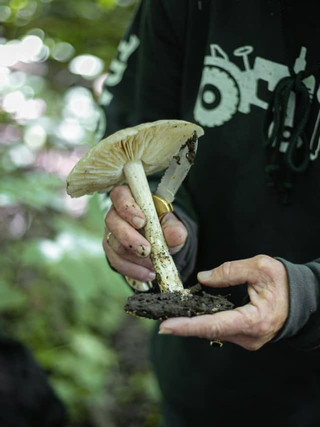
As you collect your mushrooms in the field, it's crucial to also take note of their growing conditions. Observe where they are growing - whether on soil or wood - and what type of tree or plant is nearby. Such information can aid in identifying the mushroom species more accurately. Additionally, ensure that you don't damage any surrounding flora while collecting your specimens.
Remember that only mature mushrooms are suitable to make a spore print. Once you've collected your specimens, bring them back to a clean workspace where you can create spore prints using their caps and gills. Spore prints serve as an essential tool to identify a mushroom species based on their unique print patterns and spore colors.
Now that you know how to effectively collect mature mushrooms and identify their growing conditions, let's focus on secure transportation and containment methods using wax paper and ziplock bags in the next section about 'secure transportation'.
Secure Transportation and Containment: Importance of Wax Paper and Ziploc Bag
When venturing into the great outdoors to collect mature mushrooms and their growing conditions, it's crucial to securely transport your specimens using wax paper and a Ziploc bag to avoid contamination. Here are some tips on how to do it effectively:
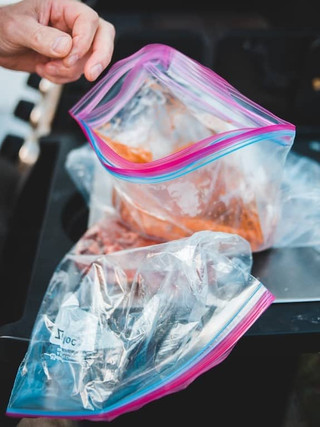
- Use wax paper: Wrap each new mushroom specimen gently in wax paper before placing them in the Ziploc bag. This will prevent any moisture from collecting inside the bag, which could lead to mold growth or other forms of contamination.
- Label everything: Once you've collected your specimens, be sure to label each one with important information such as the date, location, and type of mushroom. This will help you keep track of your collection and ensure that you can easily identify each specimen when it comes time for spore printing.
- Keep everything separate: It's important to keep your mushroom specimens separate from anything else in your bag or backpack. If you're also foraging for food on your journey, be sure to store any edible plants or fungi in a different container than your mushroom specimens.
By following these tips for secure transportation and containment, you'll be well on your way to creating high-quality spore prints that can be used for identification, cultivation, or even art projects.
Now that you know how to transport and contain your mushroom specimens safely, it's time to set up your home workspace for optimal spore print creation.
Setting Up Your Home Workspace for Optimal Mushroom Spore Print Creation
Now that you've learned how to securely transport and label your mushroom specimens, let's dive into setting up the perfect workspace for creating beautiful and unique spore prints. Creating a spore print of a mushroom is an essential step in identifying a mushroom's species. Mushroom spores come in different colors, shapes, and sizes, making it easier to classify them based on their corresponding mycological family. Some mushrooms have white spores, while others have black or brown ones.

To create the perfect mushroom spore print at home, you'll need a few items: a mature mushroom with an open cap and healthy gills, pores, or spines; white paper; black paper; glass or bowl; and wet tissue. Start by removing the stem from the cap and placing it on the white paper with the gills facing down. Cover it with a glass or bowl to prevent air currents from blowing the spores around as they fall. Wait for 6-12 hours to get a distinctive spore print pattern.
The color of the spores helps determine which mycological family a mushroom belongs to. For instance, Agaricus mushrooms have chocolate-brown-colored spores while boletes' are dark brownish-red colored. The characteristics of stored spore prints can last decades and still be viable for cultivation purposes.
Creating beautiful and unique spore prints is one of many steps towards growing mushrooms at home successfully. In upcoming sections we will guide you through each step-by-step process of making the perfect mushroom spore print so that you can identify different species correctly before starting your next harvest cycle!
Step-by-Step Process of Making the Perfect Mushroom Spore Print
You can elevate your mushroom identification skills by mastering the step-by-step process of creating stunning and informative spore prints at home. With just a few simple tools, you'll be able to unlock the secret code hidden in each mushroom's unique spore print. Follow these four steps to make the perfect mushroom spore print:
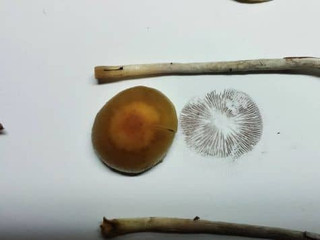
- Choose a mature mushroom with an open cap and healthy gills, pores, or spines.
- Remove the stem from the cap of the mushroom and place the cap on a clean paper, foil, or glass surface with the underside of the cap facing down.
- Cover the cap with a glass or bowl to prevent air currents from blowing the spores around as they fall.
- Wait for 6 to 12 hours to get a distinctive spore print inside.
Remember that patience is key when making mushroom spore prints – let your mushroom sit undisturbed for nearly 24 hours to ensure enough time for all of its spores to fall onto your chosen surface.
Creating beautiful and informative mushroom spore prints will not only help you identify different species but also provide endless creative opportunities for art projects and other endeavors. Just be sure to handle mushrooms safely and avoid accidental contact with poisonous species – we'll cover more on this topic in our next section about emphasizing safety while handling mushrooms.
Emphasizing Safety: Handling Mushrooms and Avoiding Accidental Contact with Poisonous Species
Let's prioritize safety when handling and identifying mushrooms to prevent any accidental contact with poisonous species. Mushroom spore printing can be an exciting and rewarding experience, but it's essential to take the necessary precautions.

Wearing powder-free gloves throughout the process, especially while handling unidentified mushrooms, is recommended. You should also avoid touching your face or mouth to prevent ingestion of harmful spores.
It's crucial to handle each mushroom with care and diligence. Before beginning the spore printing process, research each mushroom type thoroughly for identification purposes. Never consume a mushroom based solely on its spore print as some poisonous species may have similar characteristics to edible ones. Always follow a complete identification process before consuming any wild growing mushrooms.
In addition to proper handling techniques, it's equally important to maintain clean equipment when making the spore prints. Cleaning your knife and other tools with a mild solution of water and bleach before and after use can prevent unwanted spores from contaminating your next print. Cross-contamination risks can pose severe health hazards if not taken seriously.
Taking the time to prioritize safety when handling mushrooms will ensure that you have a safe and enjoyable experience in creating beautiful prints for art or cultivation purposes. Moving forward, maintaining clean equipment is crucial in minimizing cross-contamination risks during the spore printing process.
Maintaining Clean Equipment to Minimize Cross-contamination Risks in Spore Printing
Maintaining cleanliness in your tools and workspace is crucial for accurate identification and safe handling of mushrooms during spore printing, ensuring a successful mycological journey. Cross-contamination risks can mislead your identification process, leading to accidental contact with poisonous species. To prevent this, sanitize your collection tools regularly with a mild bleach solution before each use. This includes the knife, gloves, and containment materials like Ziploc bags and wax paper.

In addition to sanitizing your collection tools, it's important to maintain a clean workspace at home. Choose a spotless surface to set your paper on and consider using disinfectant for added protection. Wearing powder-free gloves during the printing process can also contribute to maintaining cleanliness. Remember that even a trace of another mushroom's spores can mislead your identification process.
Cleanliness not only boosts the accuracy of your spore prints but also promotes safety when handling potentially harmful mushrooms. Accidental contact with poisonous species can lead to serious health issues or even death. Prioritizing cleanliness in mushroom spore printing ensures that you have an enjoyable and safe mycological journey.
By following these guidelines for maintaining clean equipment during mushroom spore printing, you'll be able to accurately identify different species without risking cross-contamination or accidental contact with poisonous mushrooms. However, sometimes challenges related to humidity, temperature, and mushroom maturity may arise during the process.
In the next section about troubleshooting spore printing, we'll discuss how to tackle these challenges effectively without compromising accuracy or safety.
Troubleshooting Spore Printing: Tackling Challenges Related to Humidity, Temperature, and Mushroom Maturity
Have trouble getting your spores from your spore print to drop properly? Don't worry, we've got you covered with tips on how to tackle challenges related to humidity, temperature, and mushroom maturity in spore printing.

Spore printing can be a finicky process, and environmental factors can greatly affect the success of your prints. To ensure optimal conditions for spore dropping, make sure your workspace is clean and dry. High humidity may cause the spores to clump together or stick to the cap instead of falling onto the paper.
Another factor that can impact spore dropping is temperature. If it's too cold, the mushrooms may not produce enough moisture for adequate spore release. On the other hand, if it's too hot, the moisture may evaporate quickly before any significant amount of spores can be collected. Keep in mind that different species have varying ideal growth temperatures and adjusting accordingly might be necessary.
Mushroom maturity can also play a role in successful spore printing. Younger mushrooms may not have developed enough mature gills or pores for proper spore release while older ones could have already lost most of their potency by releasing their spores naturally. Choose mature specimens with open caps and healthy gills or pores facing downwards when making prints.
In summary, when troubleshooting issues with mushroom spore printing consider adjusting humidity levels or temperature as well as choosing appropriately matured specimens with healthy gills or pores facing gill side down towards your medium or piece of paper. In addition to these considerations, there are also techniques you can use for handling different-sized mushrooms during printing which will be discussed in our next section: 'handling different mushroom sizes for spore printing: tips for large and small caps.'
Handling Different Mushroom Sizes for Spore Printing: Tips for Large and Small Caps
Whether you're dealing with a giant mushroom cap or a tiny toadstool, mastering the art of spore printing requires adapting your method to accommodate the specimen. Here are some tips for handling different mushroom sizes during your spore printing process:
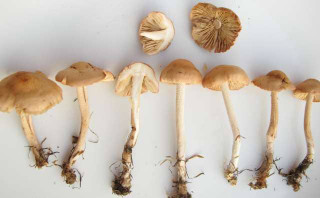
- For larger caps, use larger sheets of paper or slice them into sections and place them on separate sheets. This will ensure every spore has a landing surface and yield a more abundant spore print.
- Grouping small caps from the same species can produce a composite spore print, giving a better view of the color and pattern. Be cautious not to mix species, as it might lead to incorrect identification.
- Remember that each size difference only adds another layer of intrigue to your mushroom identification journey.
Embrace the diversity of mushroom sizes, knowing that there's no one-size-fits-all approach when it comes to spore printing. Whether you're working with large or small caps, adjusting your method accordingly will allow for accurate identification and successful cultivation. By following these simple tips for handling different mushroom sizes during your spore printing process, you'll unlock the secret code and become an expert in this intriguing hobby.
Frequently Asked Questions

Can spore prints be used alone for identifying edible mushrooms?
Spore prints can be a useful tool in identifying mushrooms, but they shouldn't be used alone to determine if a mushroom is edible or not.
Spore prints provide information on the color and shape of the spores, which can help identify the family of the mushroom. However, other factors such as cap shape, stem texture, and odor must also be considered when identifying mushrooms for consumption.
It's important to do thorough research and consult with an expert before consuming any wild mushrooms.
What are the best methods for growing mushrooms from spores?
If you're interested in growing mushrooms from spores, there are several methods available depending on the species you want to cultivate. However, it's generally not recommended to start with spores alone since it's difficult to predict the characteristics of the new strain. Instead, it's best, to begin with a proven strain created by cloning an existing popular mushroom strain for commercial purposes.
That being said, some species are easier to cultivate than others and require different growth conditions. Researching proper techniques and symbiotic relationships with other trees is crucial for successful cultivation. Additionally, making a spore slurry can help improve germination rates for difficult-to-cultivate species.
Are there any species that are difficult to cultivate commercially?
If you're interested in growing mushrooms commercially, it's important to know that some species are more difficult to cultivate than others. Chanterelles, boletes, and morels are notoriously challenging to grow on a large scale due to their complex growth requirements and symbiotic relationships with certain tree species.
However, there are still many other edible mushroom varieties that can be successfully cultivated with the right knowledge and equipment. Before starting any mushroom cultivation project, research your chosen species thoroughly and consider taking an introductory course or consulting an expert for guidance.
Can the same procedure be used for Paddy straw or volva mushrooms?

If you're wondering whether the same procedure for spore printing can be used for paddy straw or volva mushrooms, the answer is yes.
To make a print, choose a mature mushroom with an open cap and healthy gills, pores, or spines. Remove the cap from the stem and place it on a paper, foil, or glass surface with the gills, pores, or spines facing down.
Cover the mushroom cap with a glass or bowl to prevent air currents from blowing the spores around as they fall. Wait for 6 to 12 hours to get a distinctive spore print.
After that time has passed, lift the mushroom cap to see your pattern emerge!
Are there any potential health risks associated with handling mushrooms?
When it comes to handling mushrooms, there are a few potential health risks to keep in mind. Some people may be allergic to certain types of mushrooms and may experience symptoms such as hives or difficulty breathing. It's important to properly identify any mushroom before consuming it, and if you're unsure, it's best to err on the side of caution and not eat it.
Consuming poisonous mushrooms can lead to serious illness or even death. When handling mushrooms for cultivation or spore printing purposes, wearing gloves is recommended to avoid any potential skin irritation or exposure to toxins that may be present in certain species.
Conclusion
Congratulations, you've successfully unlocked the secret code of mushroom spore printing! By following this comprehensive guide, you now have the knowledge and skills needed to create stunning spore prints for identification, cultivation, and art purposes. Remember that safety is paramount when handling mushrooms, so be sure to wear gloves and avoid contact with poisonous species.
In addition to making spore prints, you can also use your new skills to cultivate your mushrooms at home. With a little patience and attention to detail, you can grow a variety of delicious and nutritious mushrooms right in your own kitchen or backyard. Be sure to maintain clean equipment and follow proper growing conditions for optimal results.
Now that you're equipped with all the necessary information and techniques for mushroom spore printing, go forth and explore the fascinating world of fungi! Whether you're a seasoned mycophile or just starting on your journey, there's always more to learn about these mysterious organisms. So keep experimenting, stay safe, and enjoy the wonderful world of mushroom spore printing!
Get Started on Your Mushroom Growing Journey with FunGuy Grow Supply! Explore our top-quality mushroom grow kits, grow bags, and mushroom spawn for a successful cultivation experience. Shop now and unlock the secret code of mushroom spore printing!
References
- Vizzini, A., Consiglio, G., & Setti, L. (2020). Testing spore amyloidity in Agaricales under light microscope: the case study of Tricholoma. IMA fungus, 11(1), 24. https://doi.org/10.1186/s43008-020-00046-8
- Alem, D., Dejene, T., Geml, J., Oria-de-Rueda, J. A., & Martín-Pinto, P. (2022). Metabarcoding analysis of the soil fungal community to aid the conservation of underexplored church forests in Ethiopia. Scientific reports, 12(1), 4817. https://doi.org/10.1038/s41598-022-08828-3
- James, T. Y., Kauff, F., Schoch, C. L., Matheny, P. B., Hofstetter, V., Cox, C. J., Celio, G., Gueidan, C., Fraker, E., Miadlikowska, J., Lumbsch, H. T., Rauhut, A., Reeb, V., Arnold, A. E., Amtoft, A., Stajich, J. E., Hosaka, K., Sung, G. H., Johnson, D., O'Rourke, B., … Vilgalys, R. (2006). Reconstructing the early evolution of Fungi using a six-gene phylogeny. Nature, 443(7113), 818–822. https://doi.org/10.1038/nature05110

